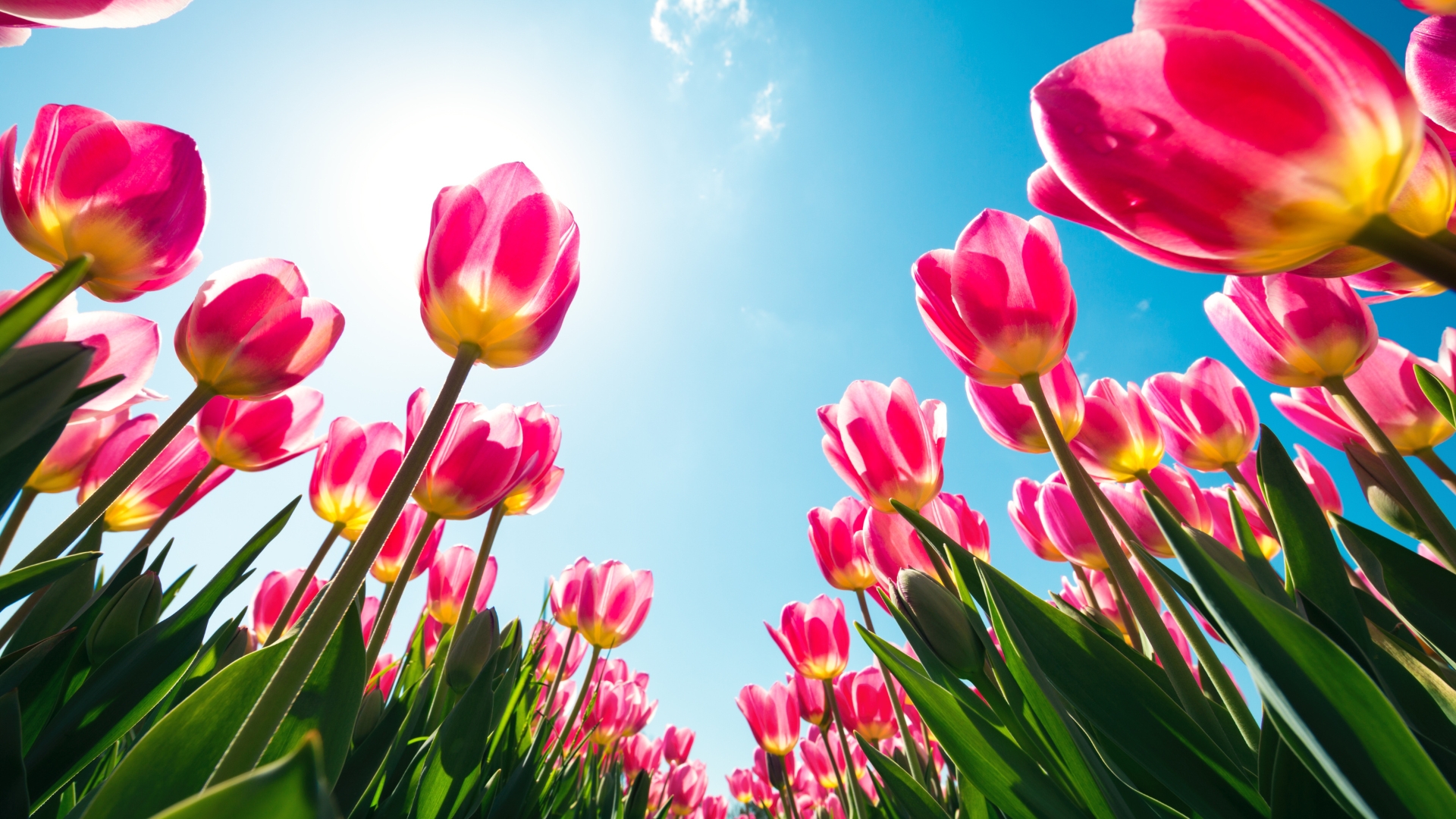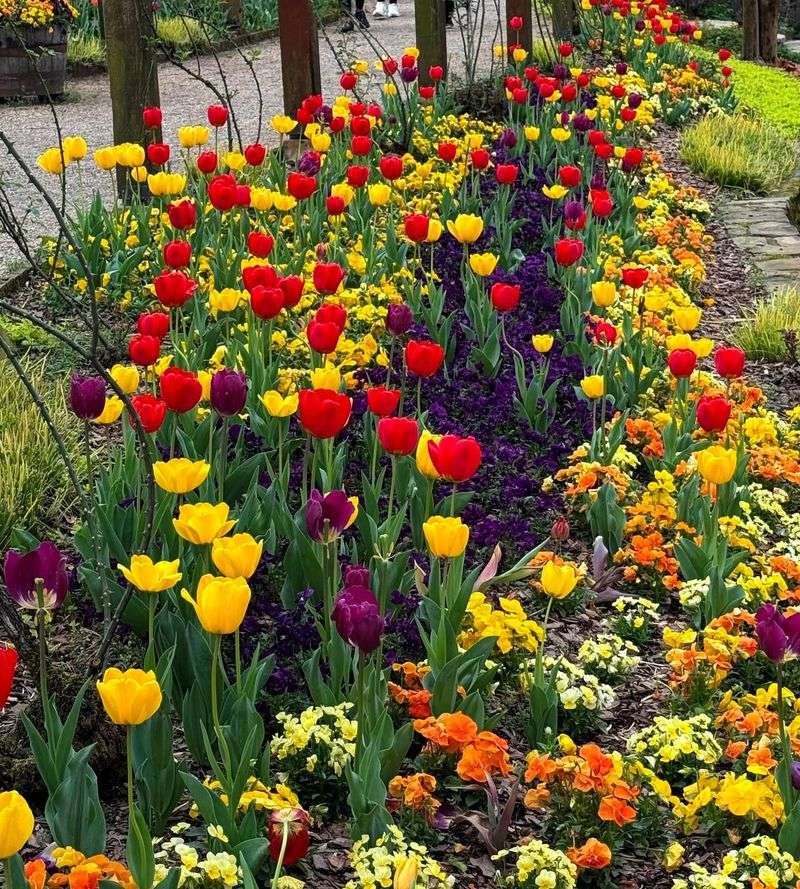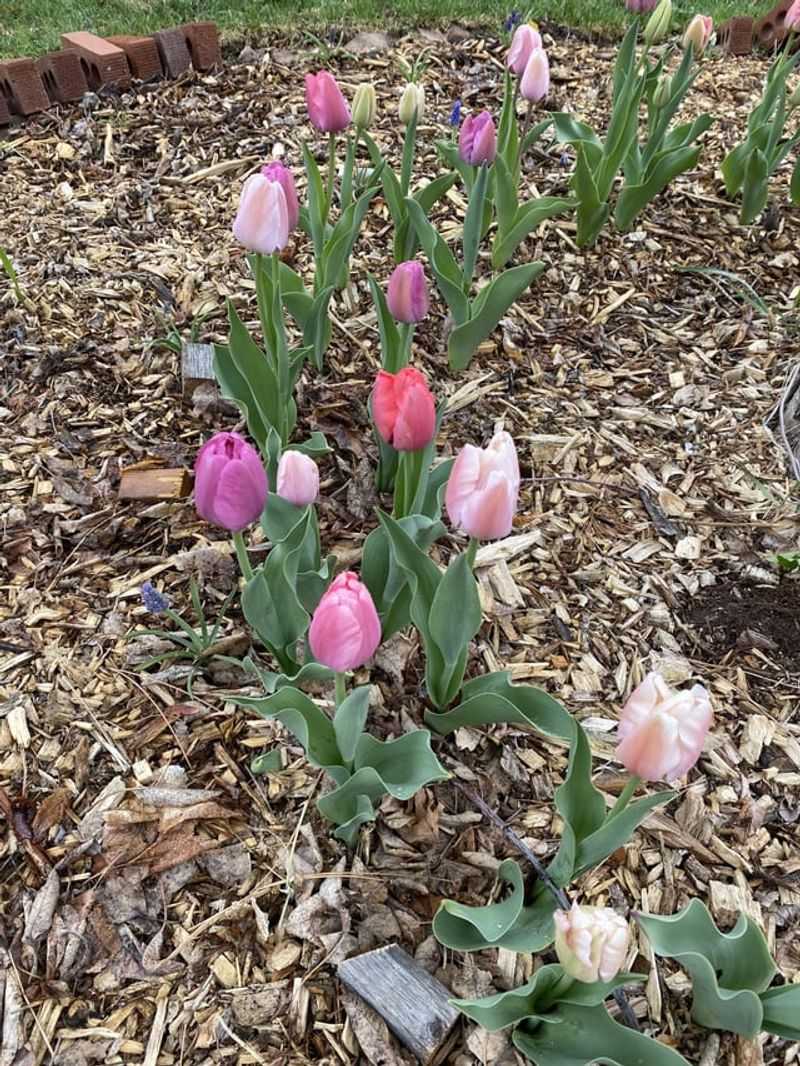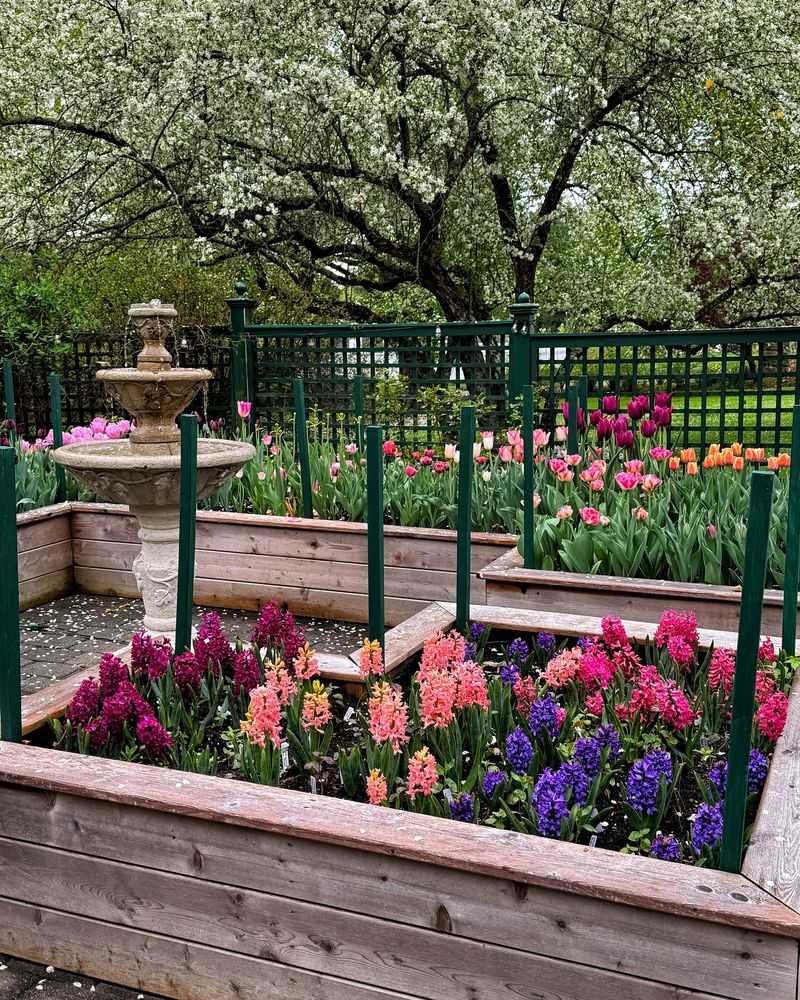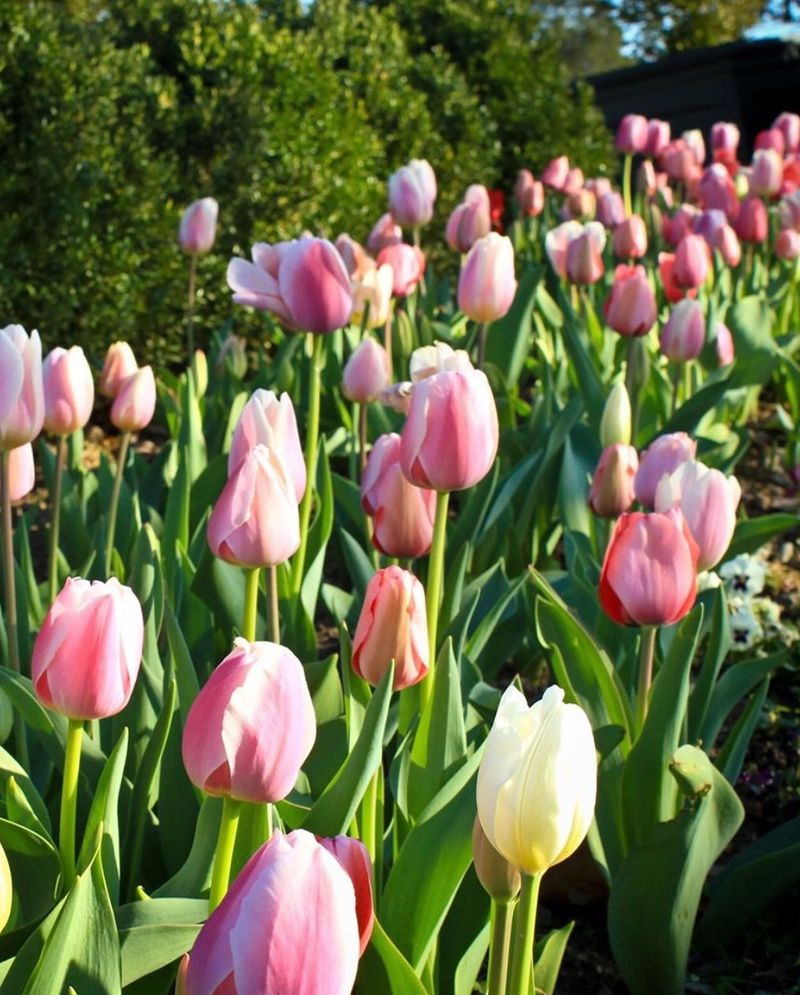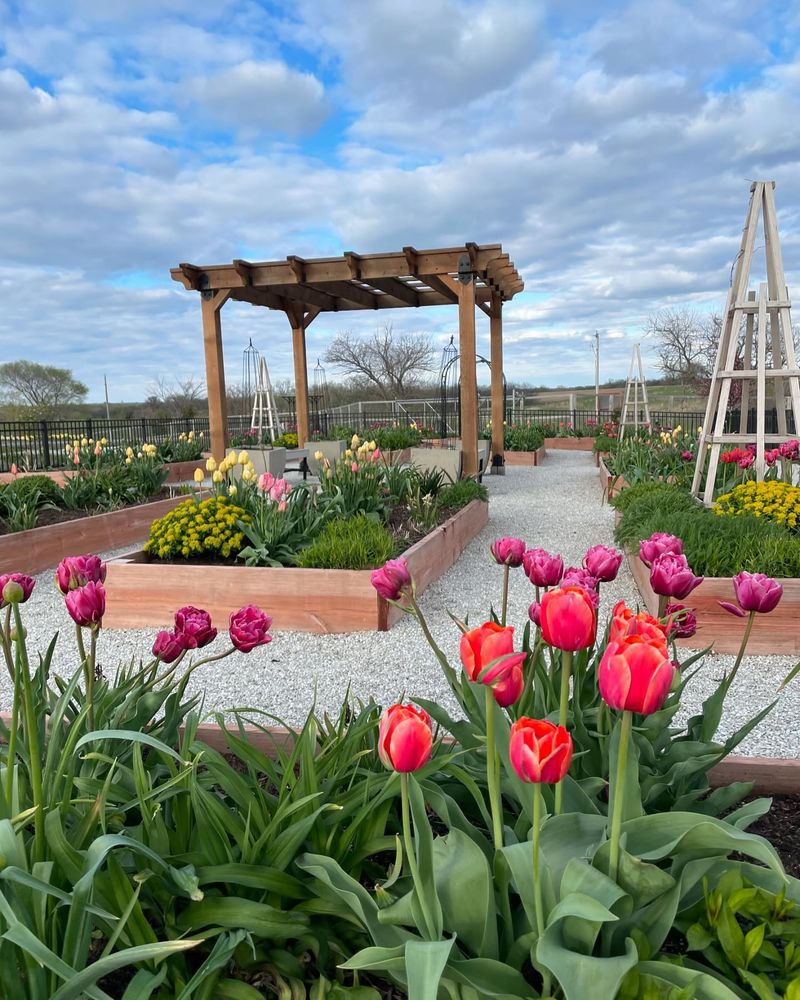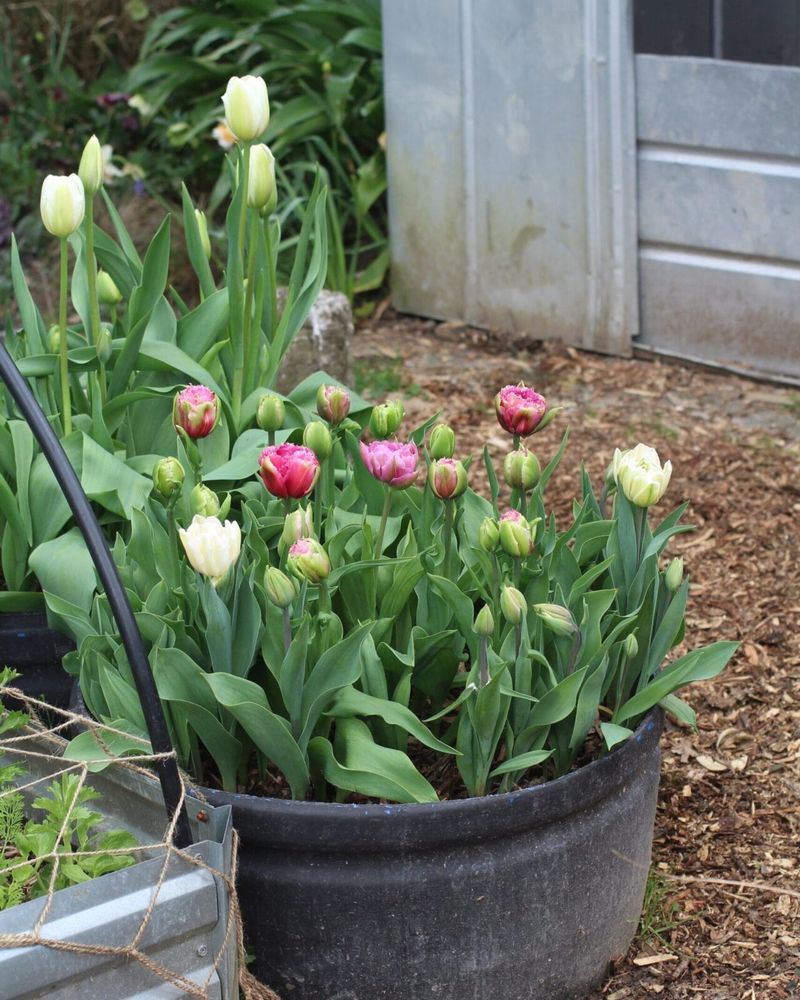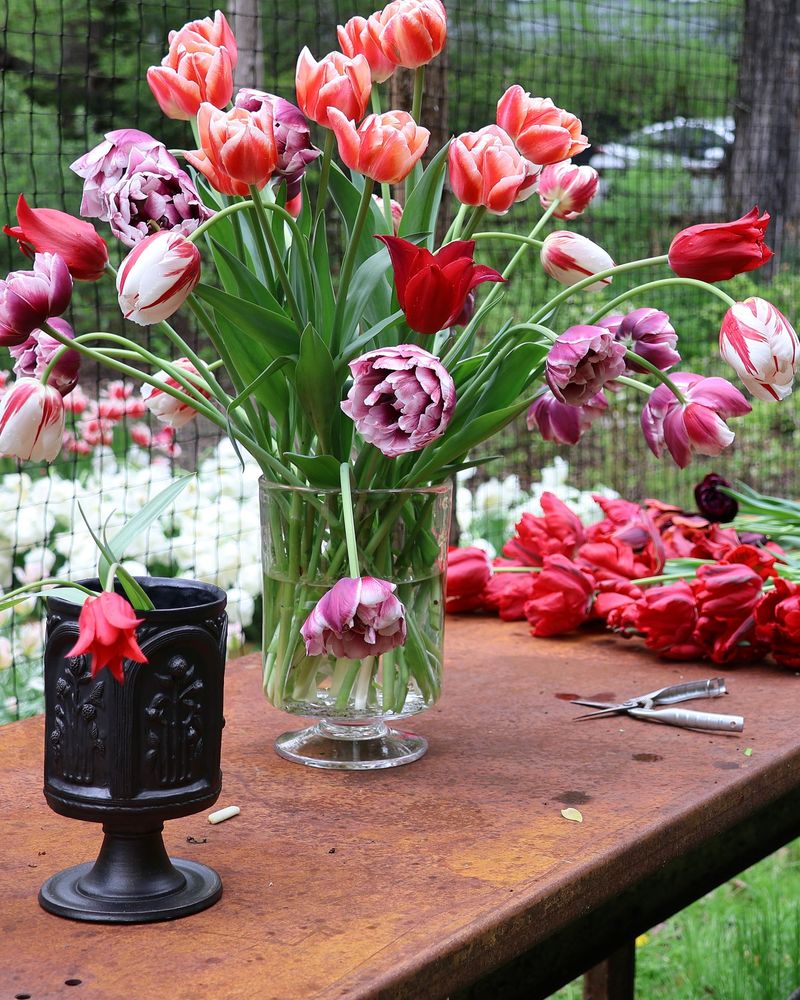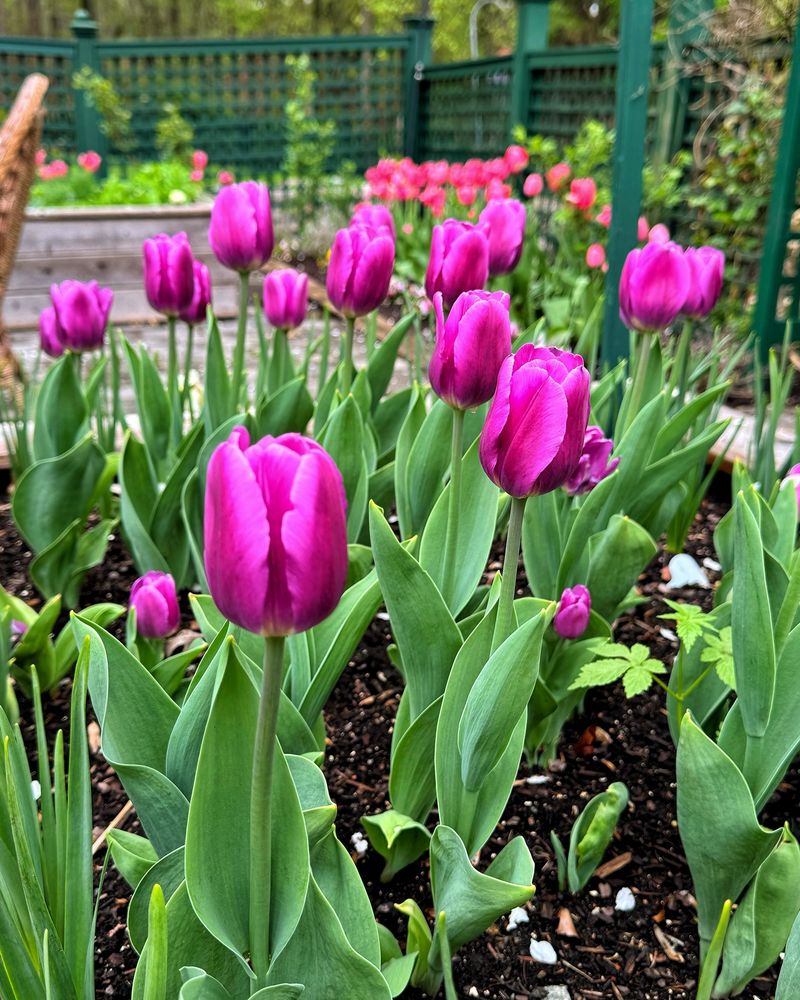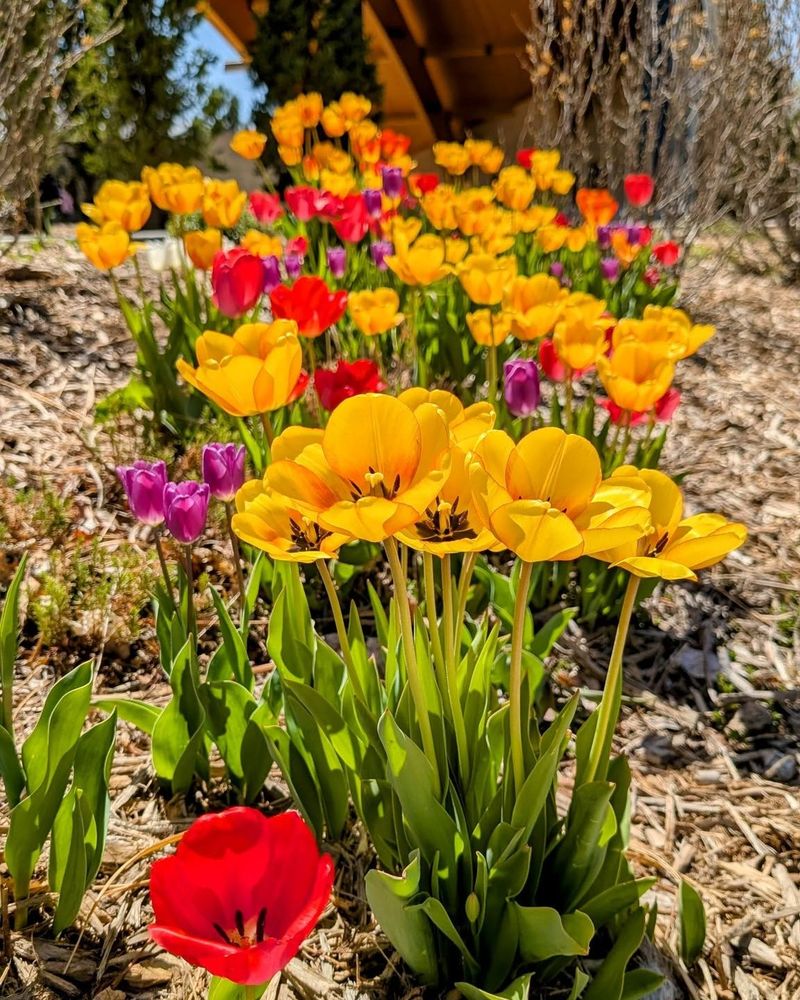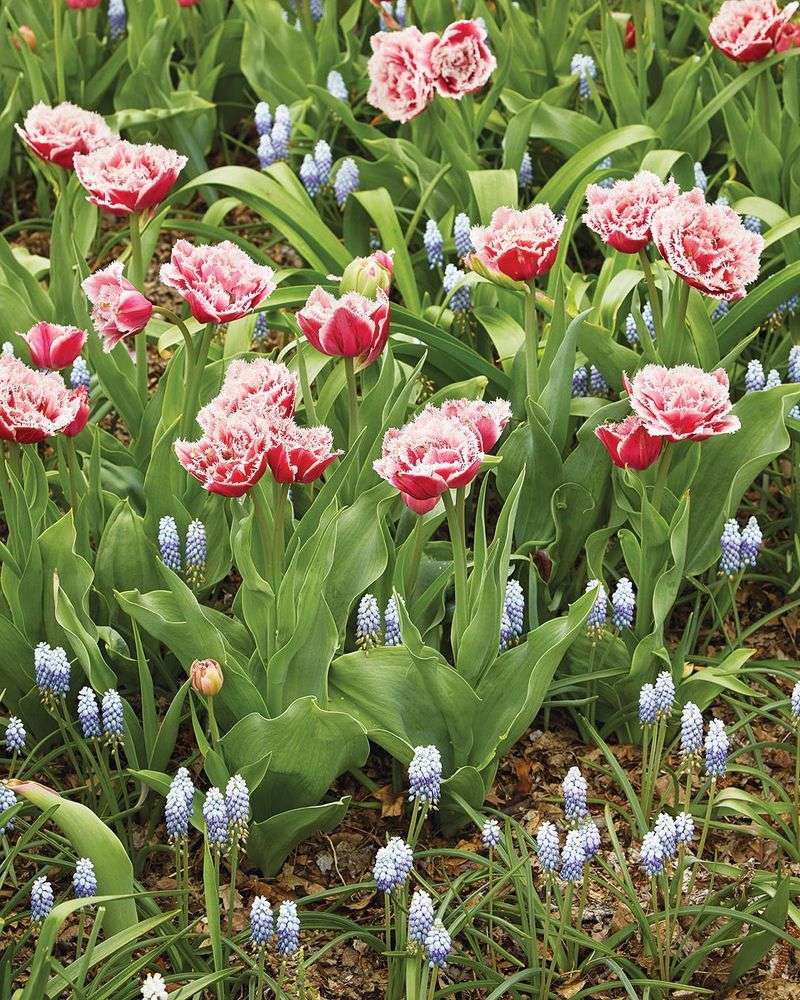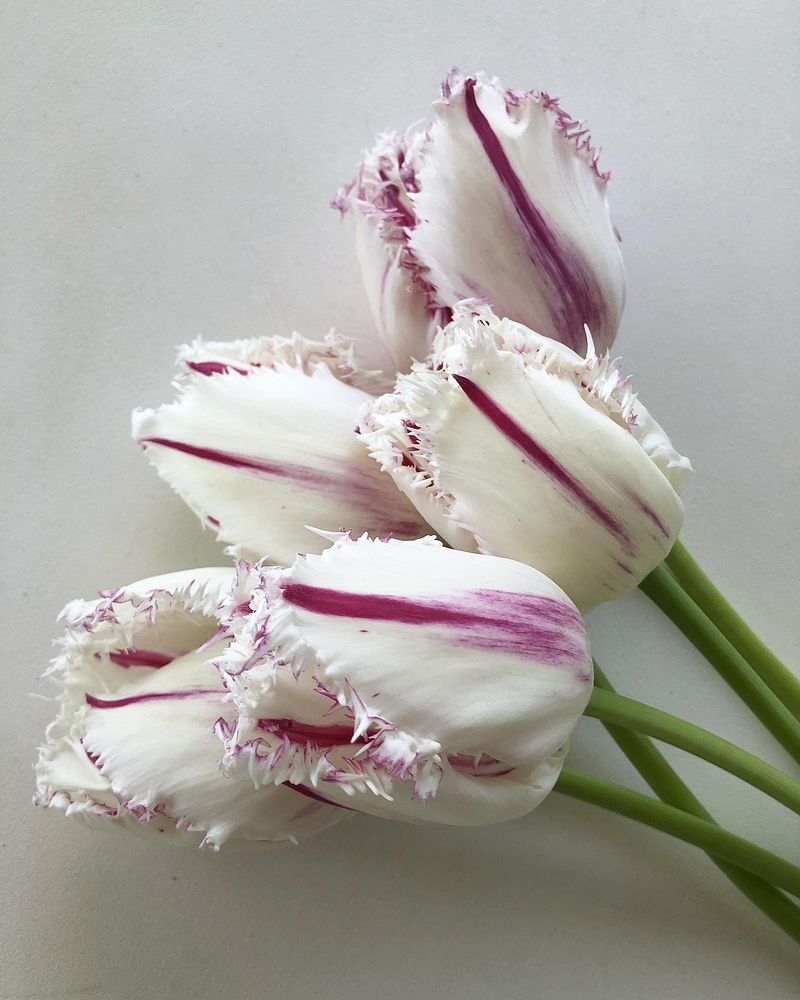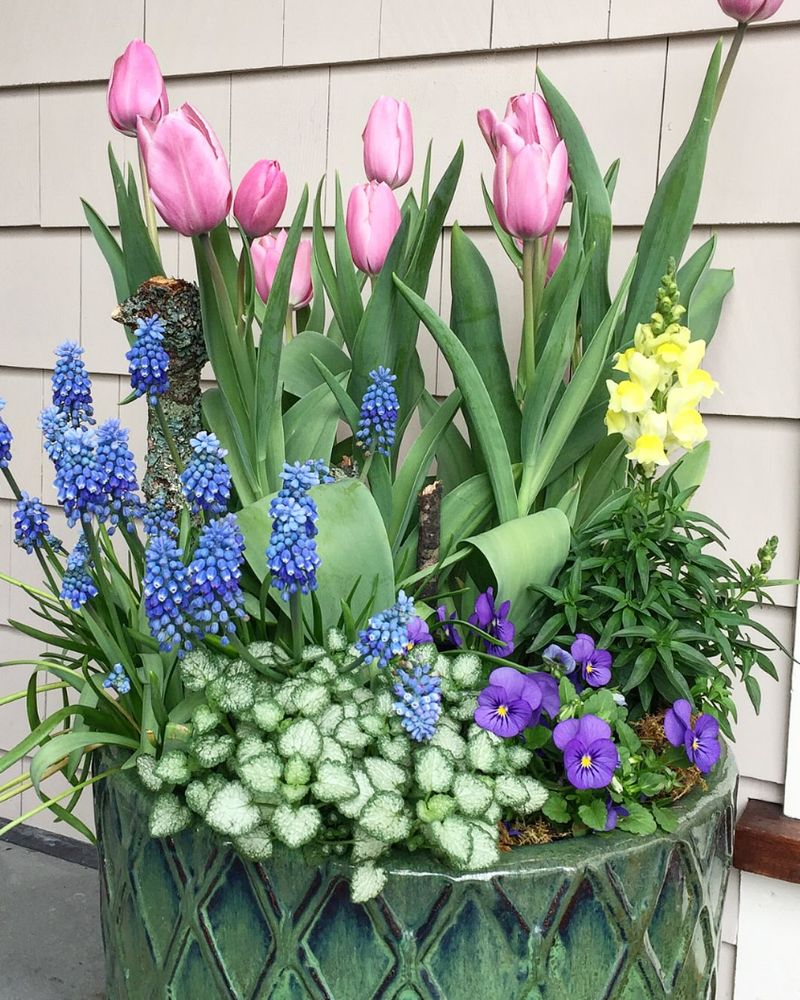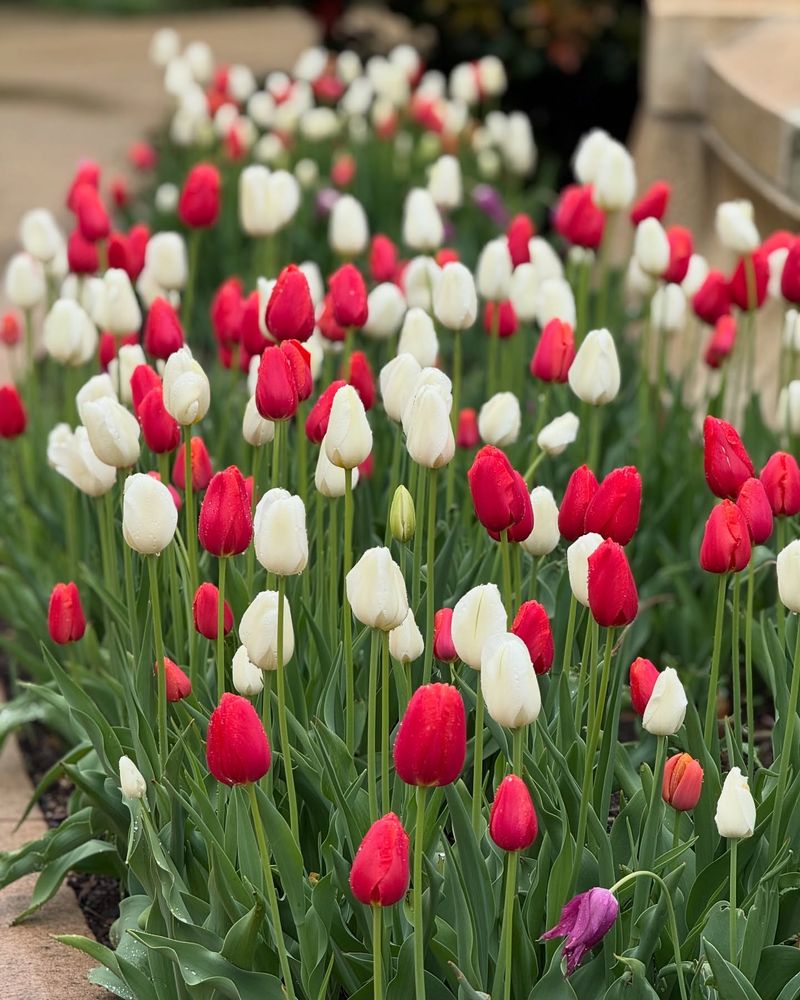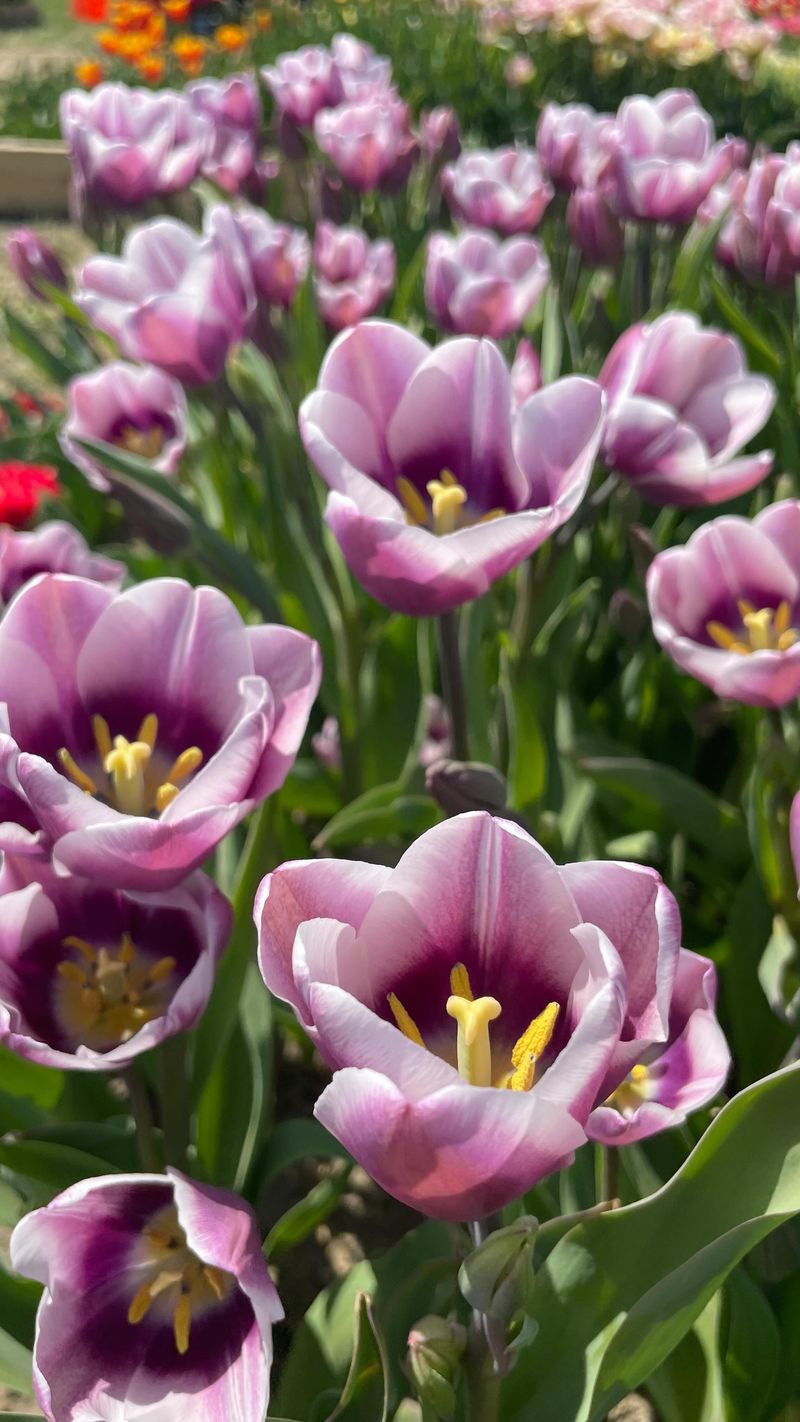There’s a reason tulips get all the attention when spring rolls around—they’ve got style, color, and serious charm.
I’ve fallen for them year after year, and once you see these 17 reasons, you’ll know why. From their bold petals to their graceful shape, tulips know how to put on a show.
And the best part? With a few simple tricks, you can make yours just as dazzling. Let’s give your tulips the spotlight they deserve!
1. Rainbow of Colors
From fiery reds to delicate pinks and pristine whites, tulips come in almost every color of the rainbow. You’ll find purples, oranges, yellows, and even varieties with striking color combinations and patterns.
Mixing different colored tulips creates eye-catching displays that brighten any garden. For a cohesive look, plant clusters of the same color, or create a kaleidoscope effect with a mix of complementary shades.
2. Early Spring Heroes
While many flowers are still hiding from late frosts, tulips boldly announce spring’s arrival. These brave bloomers often push through the last bits of snow, bringing much-needed color when landscapes are mostly brown and gray.
Plant early varieties like Fosteriana or Greigii tulips for the first splash of color. Their ability to withstand cooler temperatures makes them perfect for gardeners eager to say goodbye to winter’s grip.
3. Versatile Garden Stars
Few flowers adapt to as many garden styles as tulips do. They shine in formal gardens with their stately presence and precise rows, yet look equally charming in cottage gardens or naturalized in meadows.
Container gardening? Tulips excel there too! Plant them in pots on patios, balconies, or entryways for instant spring cheer. Their adaptability makes them perfect for both sprawling country gardens and tiny urban spaces.
4. Elegant Simplicity
The clean lines and graceful shape of tulips bring an understated elegance that few flowers can match. Their architectural form creates visual impact without being overly fussy or complicated.
Even a single tulip in a bud vase makes a striking statement. This simplicity explains why tulips have inspired artists and designers for centuries. When planning your garden, remember that sometimes less is more with these naturally sophisticated blooms.
5. Long-lasting Displays
With proper planning, tulips can provide continuous color for up to six weeks. Early, mid, and late-season varieties let you extend the show well beyond what most spring flowers offer.
Start with species tulips and early Triumph varieties in March. Follow with mid-season Darwin Hybrids, then finish with late-blooming Lily-flowered or Parrot tulips in May. This succession planting technique ensures your garden remains colorful throughout spring.
6. Perfect Cut Flowers
Bring spring indoors by cutting tulips for stunning arrangements. Unlike many flowers, tulips continue to grow after being cut, creating dynamic displays that change daily.
For longest vase life, cut stems when buds show color but haven’t fully opened. Remove any leaves that would sit below the waterline, and change the water every other day. Cool temperatures will extend their beauty, so keep arrangements away from heat sources.
7. Low Maintenance Beauty
Gardening beginners rejoice! Tulips require minimal care compared to many perennials. Plant bulbs in fall, water them in, and that’s mostly it until spring brings gorgeous blooms.
They need little attention once planted in well-draining soil. A layer of mulch helps retain moisture and suppress weeds. After flowering, let foliage yellow completely before removing to ensure bulbs store energy for next year’s show.
8. Historical Significance
Tulips carry fascinating stories that add depth to their beauty. Originally from Central Asia, they sparked the infamous “Tulip Mania” in 1630s Holland, when single bulbs sold for more than houses!
This rich history makes growing tulips like tending to living artifacts. Different varieties have stories too – like ‘Rembrandt’ tulips named for the painter who captured their beauty. Sharing these tales with garden visitors adds another dimension to your spring display.
9. Deer-Resistant Options
Frustrated by deer eating your garden? Many tulip varieties naturally repel these garden pests. Species tulips and those with bitter-tasting compounds or strong fragrances often get passed over by hungry deer.
Try planting Tulipa sylvestris, T. clusiana, or varieties with fuzzy stems and leaves. Interplanting with other deer-resistant spring flowers like daffodils and alliums creates a protective barrier. Your tulips will thank you by blooming undisturbed!
10. Perfect Companions
Tulips play well with others! Pairing them with complementary spring bloomers creates gardens with greater depth and interest. Low-growing forget-me-nots or sweet alyssum form a beautiful carpet beneath taller tulips.
For dramatic combinations, try purple tulips with yellow daffodils, or pink tulips with blue muscari. Evergreen shrubs provide a perfect backdrop for tulip displays, highlighting their colors while offering protection from spring winds.
11. Fragrant Varieties
Contrary to popular belief, many tulips offer delightful scents! While not all varieties are fragrant, those that are bring an extra sensory dimension to spring gardens that most people don’t expect.
Look for varieties like ‘Apricot Beauty,’ ‘Angelique,’ and most single early types for noticeable perfume. Species tulips often carry honey-like or citrusy scents. Planting fragrant varieties near walkways or seating areas lets you enjoy their subtle perfume whenever you pass by.
12. Naturalizing Magic
Some tulips return year after year, multiplying to create spectacular natural-looking drifts. Species tulips and Darwin hybrids are particularly good at naturalizing, spreading gradually to fill spaces with minimal effort from you.
Plant them in drifts under deciduous trees or in meadow areas where grass isn’t cut until summer. The key to successful naturalizing is choosing the right varieties and planting in well-draining soil where bulbs can remain undisturbed for years.
13. Unique Shapes and Forms
Beyond the classic cup shape, tulips come in astonishing varieties that surprise even experienced gardeners. Fringed tulips sport delicate feathered edges, while parrot tulips offer ruffled, twisted petals in psychedelic color combinations.
Lily-flowered varieties feature elegant pointed petals, and double tulips resemble peonies with their multiple layers of petals. These unusual forms add textural interest and conversation-starting features that make your spring garden truly distinctive.
14. Container Garden Stars
Limited space doesn’t mean limited tulip enjoyment! These versatile bulbs thrive in containers, bringing spring joy to patios, balconies, and tiny yards. Their compact root systems make them perfect for pot culture.
Layer bulbs in deep containers for extended blooming – place late varieties at the bottom, mid-season in the middle, and early bloomers on top. This “lasagna planting” technique delivers months of color from a single pot while maximizing your limited space.
15. Affordable Luxury
Creating a magazine-worthy spring display costs less than you might think. Tulip bulbs remain one of gardening’s best values, with most varieties costing just cents per bulb when purchased in quantity.
Buy bulbs in bulk from reputable suppliers in fall for the best deals. Even a modest investment of 50-100 bulbs creates dramatic impact. Their affordability lets you experiment with new colors and varieties each year without breaking your gardening budget.
16. Climate Adaptability
Tulips thrive across a surprising range of growing zones. From chilly northern gardens to mild southern climates, there’s a tulip variety adapted to your region’s specific conditions.
Northern gardeners enjoy reliable perennial performance from most varieties. In warmer southern areas, choose species tulips or pre-chill bulbs before planting. Some varieties even perform well in partial shade, making them versatile choices for challenging garden spots.
17. Pollinator Friendly
Early spring pollinators desperately need food sources, and tulips deliver! Single-flowered varieties provide accessible pollen and nectar when few other options exist, helping bees and butterflies after winter hibernation.
Species tulips and other open-faced varieties are particularly beneficial to pollinators. Their wide-open blooms in sunny locations become buzzing hubs of activity on spring days. Watching bees collect bright orange pollen from tulips adds another dimension of garden enjoyment.

